Theater Hall
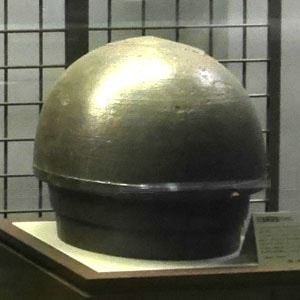
Oil Distillation Kettles (Ranbiki)
The display shows the upper part of the oil distillation pot (to see the whole picture of the pot, please take a look at the figure).
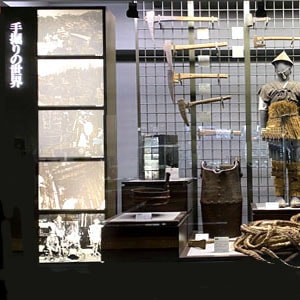
The World of Hand Digging
The hand-dug well was a life-threatening line of work, in which one digger attached a lifeline and entered the well shaft with the risk of oxygen deficiency, groundwater and gas discharge, and well wall collapse.
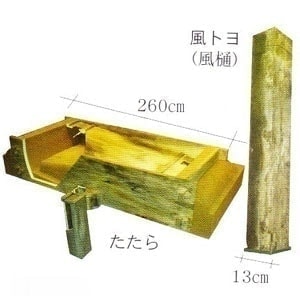
Tatara and Wind Toyo
While drilling or extracting oil from a hand-dug well, fresh air must be sent into the well constantly. To do so, "Tatara and Wind Toyo" were indispensable.
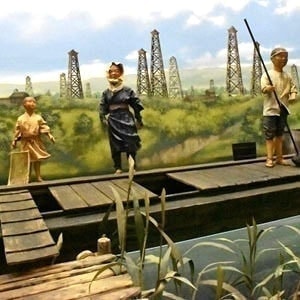
Model Oil Boat
Oil boats were used to transport crude oil from mining sites such as Garameki, Kumazawa, and Koguchi, which were close to the former Nodai River.
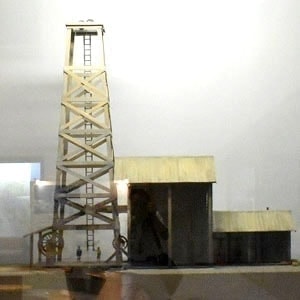
Model of Rope Machine Digging
In 1903, a rope-type mechanical excavation called ajiro-style excavation was introduced at the Kanazu mine, and this made it possible to excavate 1,500 meters, and the amount of oil production increased dramatically.
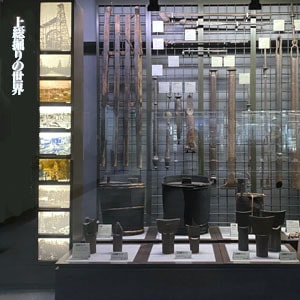
The World of Kazusabori Digging
Exhibits include digging iron pipes and tools for kazusabori digging such as hene stoppers.
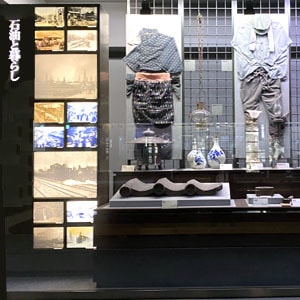
Oil and Everyday Life
In the oil economy around 1910, companies were established one after another, the number of oil miners and oil companies increased, and it was not too farfetched to say that all residents near the refineries were somehow connected to oil.
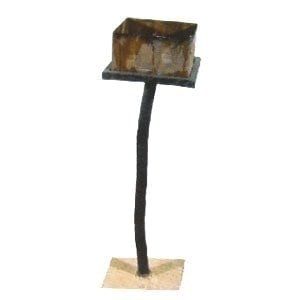
Insect Trap and
Kusouzu Bamboo Tube
After rice is planted, pests attach to the seedlings and affect their growth. Farmers put boards on stakes in places on the shore and filled galvanized iron containers with oil. A cloth was attached inside and lit from evening to morning to exterminate moths.
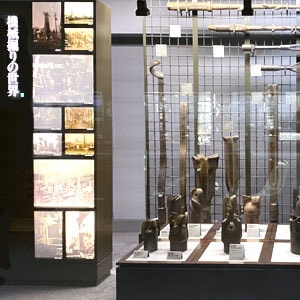
The World of Machine Digging
In 1891, Japan succeeded in digging with a rope-type machine for the first time at the Amase oil field, and it was also introduced at the Higashiyama oil field.
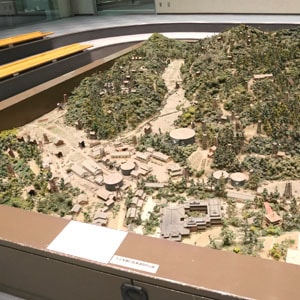
The Central Area of the Kanazu mine and Nakano's Residence at the end of the Taisho era (1/150 scale)
This is a diorama of the central area of the Kanazu mine in the late Taisho era looking from the Nakano family estate. The garden "Senkeien" on the Nakano's property is about 40,000㎡ in size, and has about 2,000 maple trees planted there. It is said that the beauty of the fresh green in spring and the autumn leaves is one of the best views in Japan. The red arrows point to the Petroleum Museum building.